You open the fridge door after a longer-than-average absence and that smell hits you on the head. Oh no, my starters are dead. There are big patches of mold and a morbid layer of hooch smothering the starter. A beginner might wrinkle their nose and toss the lot. I’m here to tell you that it is actually quite hard to kill a starter outright, and relatively easy to bring it back to life.
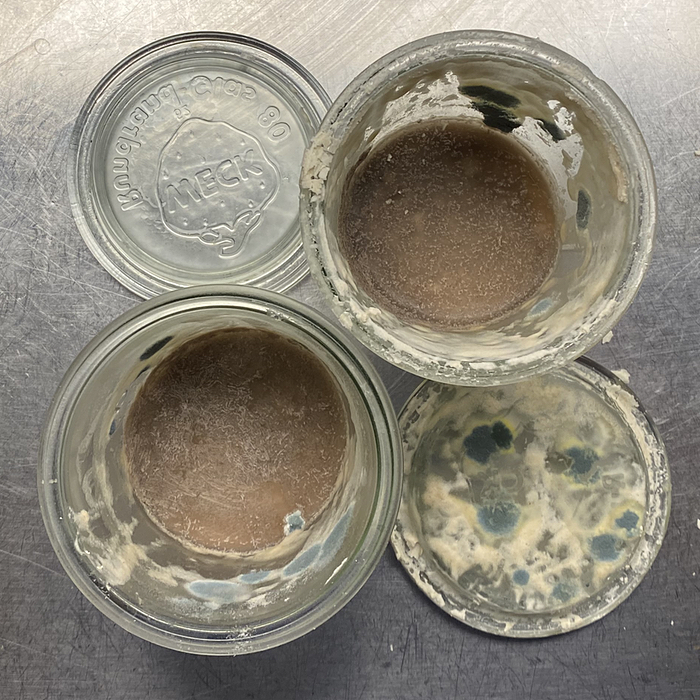
Two very dirty jars of starter
The key is to start from a small amount and feed a couple of times in quite rapid succession. That gives the good micro-organisms a head start so that they can get going and recreate the conditions that keep nasty invaders out. But it is important to make the first few feeds quite small, so that you do not dilute the remaining acidity, because it is the acidity produced by the bacteria that favours the good and keeps bad bacteria at bay.
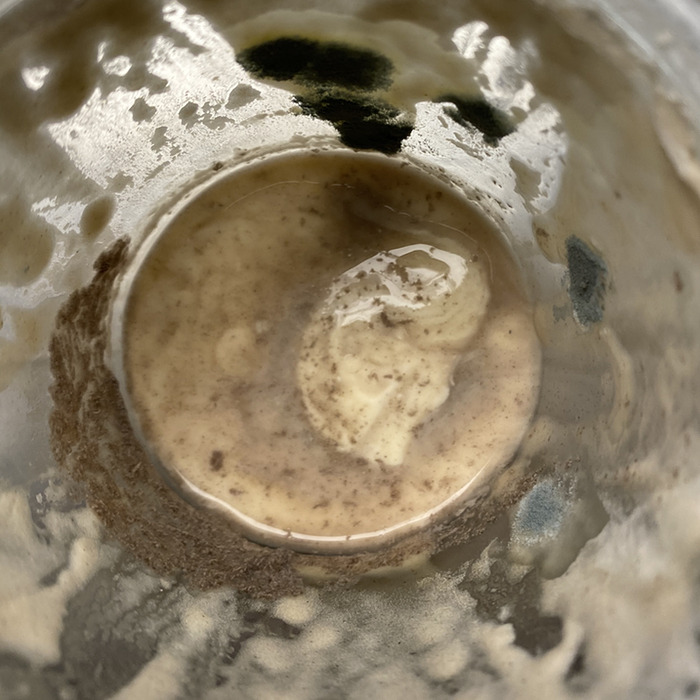
Hooch poured and scraped away to reveal cleanish starter
First, pour or scrape off as much of the hooch as you can, exposing the relatively clean starter below. Take a small amount of that starter, digging deep to get it from as far down as you can, and transfer it to a clean jar. Then feed with 1.5 times the weight of flour in the bit you rescued and the appropriate amount of water. A decent digital scale is essential.
This was my 100% hydration starter, equal weights of flour and water. I removed 8 gm of starter and fed with 6 gm of white flour and 6 gm of water. I also needed to bake some rye bread, so I did another rescue with about the same amount of starter, fed with whole rye flour.
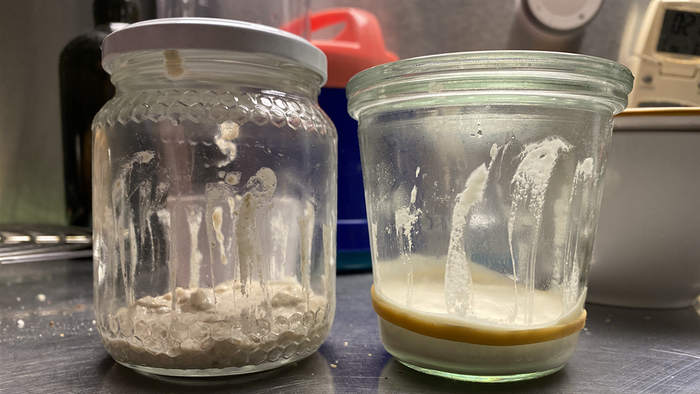
Rye and white starters at the beginning of the rescue
Then into the oven with the lamp on, because the house was freezing when we got back. About six hours later there were definite signs of life so I gave another feed, this time of double the flour, so about 20 gm. Back into the illuminated oven overnight. Next morning they were both properly alive and kicking.
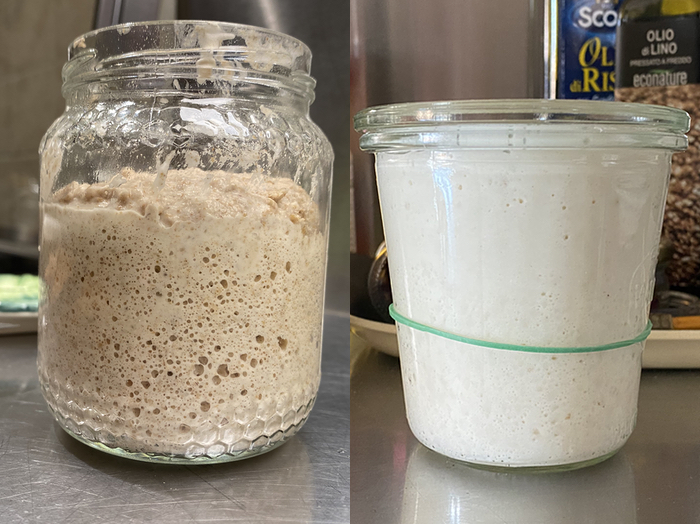
End of the second build, and both starters have filled their jars
From there, it is business as usual, building the amount of leaven I needed to bake the loaves on order. After two more feeds I had about 2.5 kg of starter, almost overflowing the bowl.
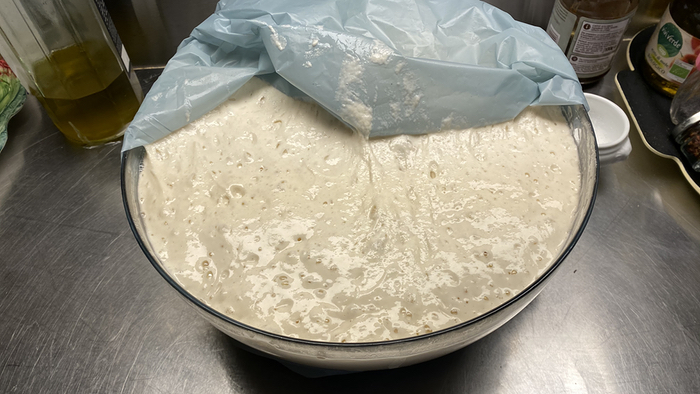
Fives builds later, 2.5 kg of leaven
And that went to raise a large batch of loaves, only half of them seen here.
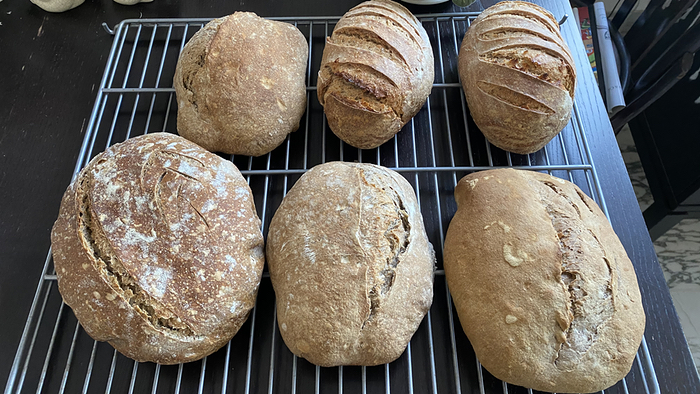
Two rye, four buckwheat
The important part is not to lose faith. Start small, don’t overfeed, and keep the leaven nice and warm, and you’re almost guaranteed to bring your sourdough starter back to life.
And if it truly is dead, well, commiserations. Time to break out the safety stored in the freezer. You do have a safety stored in the freezer, don’t you?
Mentions